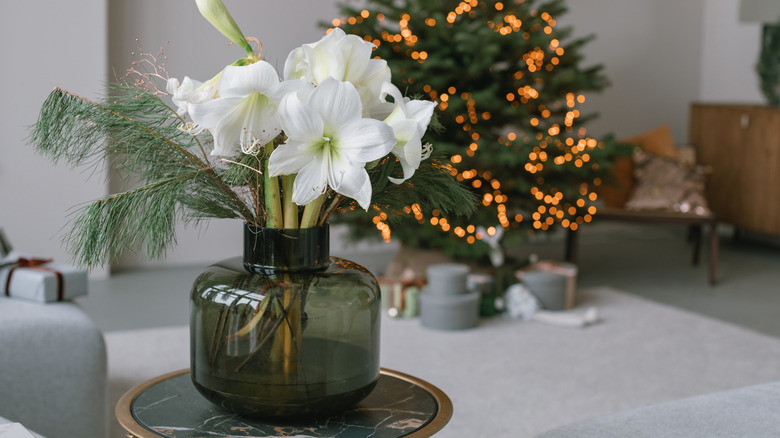The Popular Holiday Houseplant That Is Toxic To Your Dog
While flowers and houseplants can be a lovely and natural way to decorate your home, especially during the holiday season, pet parents need to be extra cautious with these additions. Some blooms and greenery are toxic to animals, so it's important to ensure your living décor doesn't pose a risk to your furry friends. Caretakers should be particularly wary of amaryllis, as this plant is quite toxic to pups.
Popular over the holiday season due to their bright red or white flowers and ability to bloom indoors during the winter, amaryllises are gorgeous. However, if your pooch happens to get their paws on this beautiful bloom, the outcome will be anything but pretty. Instead of using amaryllis to decorate your home, opt for pet-safe plants and flowers that won't harm your dog, like the Christmas cactus. If you still choose to keep amaryllises in your space, make sure to familiarize yourself with the dangers they pose to pups and the signs of toxicity to watch out for.
Amaryllis poisoning in dogs
Amaryllis is toxic to pets due to the phenanthridine alkaloids it contains. They are found in the stems, leaves, and bulbs, and will cause adverse effects if your pup happens to eat this houseplant. The bulbs are one of the most dangerous parts of the amaryllis, as they contain a high amount of another toxic component to dogs called raphide oxalate crystals.
Some of the main signs of amaryllis poisoning in dogs include stomach issues, such as throwing up and diarrhea, especially if your pup ingests the bulbs. You should also look out for drooling, tremors, and stomach pain. If eaten, the phenanthridine alkaloids found in amaryllises can cause your pup's blood pressure to drop. Additionally, seizures are another more severe problem that can potentially occur if your pup ingests amaryllis. If they eat any part of the plant, call your vet or the ASPCA Poison Control Hotline at 888-426-4435 for more guidance.

